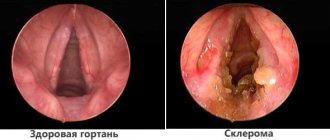Contrary to popular belief that the main thing is to bear the baby, doctors say that it is no less important to have a successful birth. A positive attitude, self-confidence, preparation, qualified personnel are, of course, good, but you should also learn how to breathe correctly at the time of delivery.
Simply because proper breathing during childbirth and labor, on the one hand, speeds up and facilitates the entire process, and on the other, minimizes the risk of complications and injuries in the baby, as well as ruptures in his mother.
How to breathe correctly during childbirth
Why is proper breathing during childbirth and labor so important? The fact is that from a scientific point of view this is a natural physiological process. Let's take a closer look at it:
- a woman’s rhythmic breathing during contractions helps supply the fetus’s body with the necessary amount of oxygen and avoids hypoxia;
- during strong contractions, the intensity of pain decreases;
- deep rhythmic breathing helps relieve stress, relieve the body of fatigue and makes the baby’s passage through the birth canal easier;
- Many women are very nervous during childbirth and are afraid that their breathing will be disrupted during childbirth, they tense up, and their breaths become short and shallow. This breathing rhythm impairs the supply of oxygen to the organs and tissues of the body, which leads to oxygen starvation of the fetus, and the woman in labor begins to feel dizzy, her arms and legs go numb, and she may completely lose control of the situation.
These scientific arguments convince us that the key to successful delivery is proper breathing during childbirth and labor. Therefore, it is important for every woman to take care of this during pregnancy. Those women in labor who are afraid of pain should especially pay attention to breathing techniques. Thanks to these techniques, as many mothers note, childbirth becomes much less painful.
How can you learn how to breathe correctly during childbirth in order to ensure an easier birth in the future, to facilitate the process of contractions, pushing, and, directly, the birth of the baby?
What do proper breathing techniques give to women in labor?
There are narrowly focused lessons for expectant mothers, where experienced instructors teach students how to breathe during labor. The purpose of such techniques is aimed at:
- Speeding up and facilitating childbirth - a woman who knows how to breathe correctly does not focus on pain, but tries to alternate between inhalations and exhalations, which contributes to the rapid opening of the uterus.
- The necessary “mood” of the muscles - measured breaths relax the body, which means they make childbirth easier, more efficient, and reduce discomfort.
- Oxygen saturation - the desired breathing rhythm brings an increased amount of oxygen into the body, saturating both the child and the mother’s tired muscles.
Attention! The breathing technique is aimed at controlling the processes of inhalation/exhalation and their gradual alternation. At each individual stage of labor, the expectant mother must breathe differently, changing the depth and duration of air intake into the lungs.
Breathing during childbirth: how to prepare?
You need to learn to control your breathing during childbirth and contractions in advance. It’s too late to delve into your memory, remembering how to inhale and exhale, right before going to the maternity hospital. Here are some useful tips to help you master proper breathing techniques:
- There is no point in practicing complex breathing techniques at home. Leave this task to athletes, professional singers and those who have been practicing meditation for a long time. These breathing techniques are powerful and have some unexpected side effects.
- In this regard, experts advise mastering proper breathing techniques exclusively in special courses under the supervision of experienced trainers. They will help you choose the most suitable technique for the expectant mother, taking into account her individual characteristics, and master it long before the birth of her child.
- Mastering breathing exercises should begin as early as possible. The smallest number of classes that a future mother should attend is six. With each breathing exercise, you become more experienced in this necessary and beneficial practice, so it will be easier for you to survive the birth process.
To learn proper breathing and choose the optimal breathing technique for yourself during childbirth, and they are different for each stage of labor, you need to enroll in special courses for expectant mothers. Quite a lot of breathing exercises have been developed. Each of them is specially created for women in labor to facilitate the most important moment of the birth of their baby.
About exhalation!
Exhale after pushing through your mouth slowly! To prevent the child from being pulled back sharply, the exhalation must be smooth, and the child is fixed at the level to which he has advanced.
With the next push, the child will not need to start from the previous point. And with each attempt he will move forward little by little. That's all about breathing during childbirth. Summarize.
In short, during contractions, deep, slow breathing with relaxed muscles; during pushing, dog breathing, which turns into holding a deep breath at the level of the vocal cords with an open mouth and squeezing the child with this air.
I was glad to share the necessary information. Sincerely, Galina Voronina.
How to breathe correctly during contractions
Usually, already at the first contractions, which arise and disappear, and do not bring severe pain, are felt like a stretching of the abdomen, many women already get ready and go to the maternity hospital. A little later, the contractions intensify and resume at certain time intervals, becoming constant.
It is important to remember that there are a number of things that should not be done once contractions have become regular. A woman in labor should not try to suppress pain, strain her body, squeeze, or scream. By acting in this way, a woman will not only not alleviate her condition, but will also worsen it - her body will weaken and get tired before it should, and the pain will not subside.
Most women, for whom this is the first birth, are very tense during each contraction, they suppress labor and prevent the uterus from opening. In such a situation, doctors have to resort to inducing labor and relieving pain with medications. The state of constriction of the mother in labor also aggravates the situation - it makes it difficult to supply the baby with oxygen, and this in turn leads to hypoxia, deterioration of the baby’s well-being and affects its subsequent development.
Pediatricians note that children who have experienced a state of oxygen starvation during childbirth are more likely to suffer from various diseases and adapt less well. Therefore, it is very important for the mother in labor to relax and use breathing techniques. Below are some of them.
At the beginning of contractions, the following technique should be used: inhale through the nose for a count of four, exhale through the mouth for a count of six. Remember that inhalation is always shorter than exhalation. When you exhale, form your lips into a “tube”. This breathing technique will help you calm down, relax, and saturate the body with oxygen, since long exhalation helps fill the blood with oxygen and helps deliver it to the organs of the mother and child.
In addition, this technique helps to distract from pain, since the woman in labor must constantly keep score, and she simply will not have time to think about pain. Always remember: you need to inhale through your nose and exhale through your mouth.
As contractions intensify and become more frequent, you need to speed up your breathing. To do this, you can use the following technique - “doggy breathing”. This name may seem funny at first glance, but during the fight it doesn’t seem so. You need to breathe shallowly, open your mouth slightly, as dogs do in hot weather.
Don't worry about looking funny in front of obstetricians or doctors. It won't surprise them. You need to take care to make labor easier for yourself and help the baby be born faster. So put aside your prejudices, open your mouth, stick out your tongue a little and get ready to breathe quickly and shallowly.
When the uterus begins to open, you can change this technique to another, which is called the “locomotive”. It’s simple to do: when the contraction begins, breathe quickly and shallowly, inhale through your nose and exhale quickly through your mouth, lips pursed into a “tube.” As the contraction eases and the pain decreases, try to even out your breathing. This technique is suitable for suppressing an attack of pain during contractions using only breathing.
How to breathe during childbirth: techniques
With the dilation of the cervix by four to five centimeters, the active phase of the initial stage of labor begins. At this stage, contractions last 20 seconds or more, and the interval between them decreases to five to six minutes. The contractions of the uterus intensify, which can make the woman in labor nervous. It is considered normal if amniotic fluid flows at the same time. The amniotic fluid-filled amniotic fluid acts as a shock absorber and weakens uterine contractions. When it ruptures, the uterus begins to contract more strongly, so after the water is released, the contractions will only intensify, become longer and more frequent. To overcome this uncomfortable condition, you can use the following breathing techniques.
"Candle". This technique involves frequent shallow breathing, inhaling through the nose and exhaling through the mouth. Imagine that there is a candle in front of your lips. Try to blow it out very quickly, but not completely, inhale through your nose and exhale through your mouth. There should be no pauses between breathing cycles (inhalation-exhalation) until the contraction stops. 20 seconds of this rhythm will make the woman in labor feel slightly dizzy. The fact is that in this way the respiratory center of the brain will receive excess oxygen and begin intensive production of endorphins. These substances, known to most readers as “hormones of happiness,” have a remarkable, valuable effect - they can increase the pain threshold, that is, reduce pain. So fast shallow breathing can work during a contraction as a natural pain reliever, a natural analgesic.
"Big Candle" This is an accelerated version of the “candle” technique. The breathing rhythm is similar to the previous one - a series of frequent shallow inhalations through the nose and exhalations through the mouth throughout the entire contraction. This requires adding some effort. You need to inhale as if you have a stuffy nose and need to clear it, and exhale through almost closed lips. If you have a mirror at hand, at this moment you can find that the cheeks and wings of the nose are involved in breathing. This technique is used when normal candle breathing is not enough to relieve pain.
"Locomotive". This technique is good when the cervix is fully dilated. At this point, the baby's head begins to pass through the dilated cervix. The organ itself is excited, contractions become intense, frequent and lasting - 40-60 seconds. The intervals between them are reduced to a minute or less. The meaning of the method is to “breathe” the contraction, for which a combination of the two breathing techniques described above is used. If you schematically depict the sensations during a contraction, you will get a graph in the form of a wave - the beginning of a contraction is characterized by minor sensations, then they increase, reach a peak and gradually fade away. According to the sensations experienced by the woman in labor, ri accelerates and decreases. You should start with candle breathing. Like a train that is picking up speed, breathing should gradually increase, as with the “big candle” technique. When the intensity of the contraction reaches its peak, breathing should become as fast as possible. When the contraction weakens, breathing gradually evens out and calms down - the “locomotive” approaches the station where it can rest.
After using any technique of frequent shallow breathing in the last stage of the contraction, you need to inhale deeply through the nose and empty the lungs through the mouth. This will help even out your heartbeat, relax and rest a little before another contraction.
How to breathe during the second stage of labor
The baby's movement through the birth canal begins after the cervix is fully dilated. In this case, stretching of the soft tissues of the pelvic organs occurs, in particular the wall of the rectum. This makes the woman in labor want to push. A similar sensation occurs when you have the urge to defecate. During the pushing, the expectant mother tenses her abdominal muscles, stimulating the baby to move towards the exit. But at the very beginning of the second stage of labor it is too early to push. At this time, on the contrary, you need to relax and let the child pass as low as possible along the birth canal. It also happens that in some women the onset of pushing precedes the final dilatation of the cervix. If they begin to push at this moment, actively moving the baby’s head along the birth canal, they will provoke a rupture of the cervix. So how can you control the urge to push?
A special breathing technique will again come to the rescue. It will help you take your mind off pushing ahead of time. With the onset of contractions and the desire to push, the woman in labor should open her mouth and begin to breathe quickly and shallowly. You need to both inhale and exhale through your mouth. This is very similar to how dogs breathe when they are out of breath from running fast. By using this type of breathing, you stimulate the diaphragm to constantly move down and up. Such movements force the muscles of the anterior abdominal wall to tense and make pushing impossible.
When the time comes to push, the main thing is to inhale correctly before the contraction begins. Its effectiveness will directly depend on how you breathe at that moment. At the beginning of the contraction, take a full breath of air through your mouth, as if you are preparing to dive. Now hold your breath and push, squeezing your abdominal muscles. At the end of the effort, open your mouth slightly and exhale smoothly. This will help the walls of the birth canal relax, allowing the baby to settle into position. Thus, the correct breathing rhythm will bring the joyful moment of your meeting with your baby closer!
What else you need to know about breathing during childbirth and preparation for it
There are several simple rules that will help the expectant mother more easily control the breathing process during childbirth:
- the stronger the contraction, the more frequent and intense the breathing should be;
- to reduce pain, do not lose your breathing rhythm;
- you should control your breathing completely, do not breathe arbitrarily or haphazardly;
- when the contraction begins, relax as much as possible;
- get rid of panic;
- There is no need to wait for a fight - it’s better to just rest.
Ideally, before giving birth, the woman in labor would train to breathe correctly and attend classes for expectant mothers: they usually teach all breathing techniques. You shouldn’t rely on “maybe” and avoid training that will help you learn to breathe. Those mothers who trained hard usually do not have breathing problems during childbirth, unlike those who “shirked” from training.
Sometimes during training, hyperventilation - excess oxygen. In this case, the expectant mother may feel dizzy and her vision may darken. To get rid of hyperventilation, you need to inhale and then not breathe for 30 seconds.
When breathing with an open mouth during labor, women in labor often experience dry mouth. You can avoid this by placing the tip of your tongue against the roof of your mouth just behind your teeth or by breathing through open palms.










